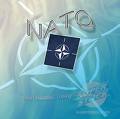Partners in Global Warfare: NATO Reinforces Pentagon’s Shift to the Asia-Pacific Region

Originally published in September 2012
In September 2012 the North Atlantic Treaty Organization granted Iraq the second Individual Partnership and Cooperation Programme under the auspices of the bloc’s latest military collaboration and integration framework, partners across the globe.
The latter program (for which the substantives are occasionally capitalized), NATO’s latest, incorporates to date eight nations in the broader Asia-Pacific region (including West Asia, the Middle East) that have supplied troops for the U.S.-led military organization’s war in Afghanistan under International Security Assistance Force (ISAF) command or are subsumed under NATO consultative arrangements and training programs like the Afghanistan-Pakistan-ISAF Tripartite Commission, the NATO Training Mission-Afghanistan and the NATO Training Mission – Iraq.
The partners across the globe currently are Afghanistan, Australia, Iraq, Japan, Mongolia, New Zealand, Pakistan and South Korea. Among the 50 nations providing NATO with troop contingents for the war in South Asia are additional Asia-Pacific states not covered by other international NATO partnership formats like the Partnership for Peace (22 nations in Europe, the South Caucasus and Central Asia), the Mediterranean Dialogue (seven nations in North Africa and the Middle East, with Libya to be the eighth) and the Istanbul Cooperation Initiative, which targets the members of the Gulf Cooperation Council (Bahrain, Kuwait, Oman, Qatar, Saudi Arabia and the United Arab Emirates).
Those states – Malaysia, Singapore and Malaysia – are likely the next candidates for the new global partnership, as are Latin American troop contributors like El Salvador (present) and Colombia (announced). The inclusion of the last will mark the expansion of NATO, through memberships and partnerships, to all six inhabited continents.
In the past two years there has been discussion about NATO establishing a collective partnership arrangement, which could include individual partnerships as well, with the ten members of the Association of Southeast Asian Nations, which are, in addition to Malaysia and Singapore, mentioned above, Brunei, Cambodia, Indonesia, Laos, Myanmar, the Philippines, Vietnam and Thailand.
During the NATO summit in Chicago this May, Secretary General Rasmussen met with what were identified as 13 partners across the globe.
Regarding the new partnership agreement with Iraq, the NATO website reports that it follows and builds upon the eight-year NATO Training Mission-Iraq, which was employed to train thousands of Iraq officers, soldiers and oil police, and “inaugurates a full-fledged partnership.” (2)
The Alliance further stated, “The signing of the partnership accord marks the formal accession of Iraq to NATO’s ‘partnerships family,'” which will create the basis for the Western alliance “assisting Iraq as it builds a modern security sector which can cooperate with international partners.”
That is, the NATO-trained Iraq armed forces are being recruited into the Western military axis’ international nexus.
Four days earlier NATO signed an Individual Partnership and Cooperation Programme with South Korea in Brussels which, the NATO press release on the occasion stated, “follows seven years of progressive engagement from a dialogue that was initiated in 2005.”
In June NATO Secretary General Rasmussen traveled to New Zealand and signed the same agreement with the nation’s prime minister, John Key.
The first Individual Partnership and Cooperation Programme was signed with Mongolia this March. (Though an agreement with the same title was signed with Switzerland in the same month.) That country borders China and Russia; in fact, of the eight current partners across the globe, three – Mongolia, Pakistan and Afghanistan – share borders with China and two others, Japan and South Korea, are its near neighbors.
In conjunction with the U.S., NATO is striving to assemble the remnants of defunct or dormant Cold War-era military blocs in the Asia-Pacific region, all modeled after NATO itself – the Central Treaty Organization (CENTO), the Southeast Asia Treaty Organization (SEATO) and the Security Treaty between Australia, New Zealand and the United States of America (ANZUS) – to replicate in the East against China what NATO expansion has accomplished in Europe over the past 13 years in relation to Russia: its exclusion, isolation and encirclement by military bases, naval deployments and interceptor missile installations.
The U.S. has recruited Japan, South Korea and Australia into its global sea- and land-based missile shield grid, with a recent report indicating the Pentagon plans to add the Philippines to the list with the deployment there of an Army Navy/Transportable Radar Surveillance mobile system of the sort already stationed in Japan, Israel and Turkey.
Following Mongolia, New Zealand, South Korea and Iraq, NATO intends to sign Individual Partnership and Cooperation Programme accords with its remaining partners across the globe: Afghanistan, Australia, Japan and Pakistan.
Like South Korea with its neighbor to the north, Japan is embroiled in a showdown with China, and Afghanistan and Pakistan are involved in armed conflicts, with NATO waging a nearly 11-year war in Afghanistan and periodic incursions and attacks across the border in Pakistan.
The formal consolidation of military partnerships with the above nations will provide NATO the rationale for direct participation in hostilities in the Asia-Pacific region as a manifestation of the bloc’s repeated claims to being a global military force.
Notes
1) Partners Across The Globe: NATO Consolidates Worldwide Military Force, http://rickrozoff.wordpress.com/2012/04/26/partners-across-the-globe-nato-consolidates-worldwide-military-force/
2) Iraq: NATO Forges New Strategic Partnership In Persian Gulf, http://rickrozoff.wordpress.com/2012/06/21/iraq-nato-forges-new-strategic-partnership-in-persian-gulf/

